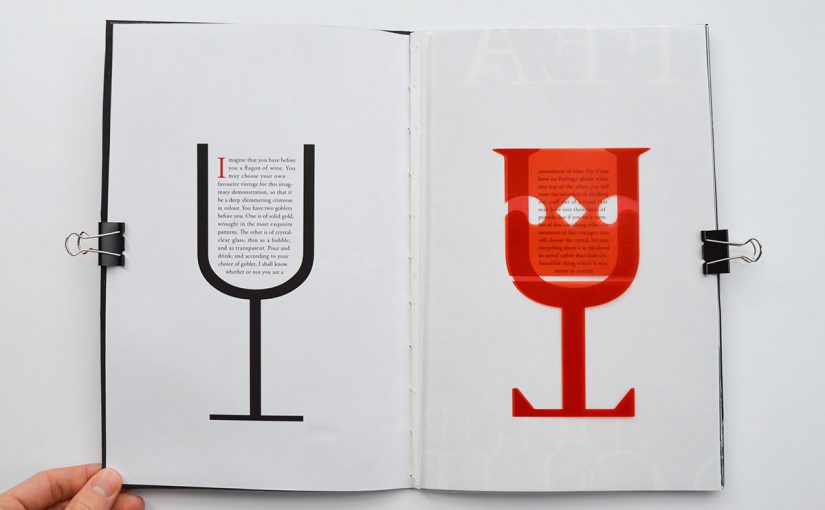Beatrice Warde uses a pretty interesting metaphor in her essay, comparing the craftsmanship of a crystal goblet to typography and printing. In the essay, she uses the aforementioned metaphor to bring her point across, on what is her definition of good typography and the sort of mindset a good typographer should have. And I do agree with her, for the most part.
Typography does require a lot of attention to detail and precision, particularly so when dealing with editorials, or any collateral that has a fair amount of text. Besides having to take into consideration the overall aesthetic of the layout and whether or not everything is consistent, the designer has to ensure that the text is laid out in a legible and readable manner, so as to ensure that the reader will not struggle to read nor get bored while reading the text. At the same time, whatever creative execution the designer does in the end must not distract the reader from the message of the text. As Warde puts it, “Type well used is invisible as type, just as the perfect talking voice is the unnoticed vehicle for the transmission of words, ideas.”, this I think is particularly apt., especially so for one is dealing with content-heavy collaterals.
Warde also then goes on to describe the book typographer’s job as that of “erecting a window between the reader inside the room and that landscape which is the author’s words” and and further goes on to emphasize her above idea by saying “I have a book at home, of which I have no visual recollection whatever as far as its typography goes; when I think of it, all I see i the Three Musketeers and their comrades swaggering up and down the streets of Paris.”, this I still agree for the main purpose of a book is to convey the author’s ideas and the book typographer’s creative decision should not be obvious, at least not to someone who has no sensibilities about typography.
What I do not agree with is her point “it is mischievous to call any printed piece a work of art, especially fine art: because that would imply that its first purpose was to exist as an expression of beauty for its own sake and for the delectation of the senses”. This is not necessarily true as fine arts, while it had originated from a place of focusing on “aesthetics for aesthetics’ sake”, has gone on to take more meaning. Fine arts may have existed as merely an expression of beauty for its own sake back in Warde’s time but in modern day context, may not be true anymore. Furthermore, Warde goes on to say “the type which, through any arbitrary warping of design or excess of çolour, gets in the way of the mental picture to be conveyed, is a bad type.”. I agree that while warping and too much colour can prove to be a distraction, it really depends on what is the function of the piece of text, as well as the message behind it. Sometimes, these warps and excessive usage of colour can help for viewers remember the message much better. Take for example comic sans, where its unevenness makes difficult to read. This forces the reader to slow down, so as to better be able to absorb the text, allowing them to remember more.
All in all, Beatrice Warde makes an interesting and compelling point about good typography and printing, most of which are still relevant today. However, there are certain points that may not be as relevant to us anymore, due to the changes in society and the changes in trends in art and design.
Once again, credit must be given when credit’s due. The cover image is taken from here and was created by Samuel Gorham
